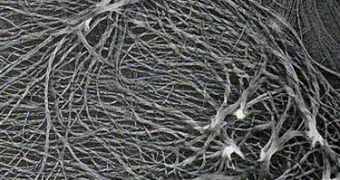Understanding how life evolved on Earth over hundreds of millions of years greatly depends on finding actual signs left behind by ancient life forms. For example, in the case of dinosaurs, fossils pointed towards most of what we known about them now, while insects trapped in amber further provided important evidence to what our planet looked like in the past.
Researchers of the University of North Carolina now report that they have found signs of life in halite crystals, mostly known as 'rock salt', a mineral found all over the world. "The discovery is an invaluable resource for understanding the evolutionary record of Earth over a geological time frame," said the research team in a press release.
It might not look like it at first, but halite presents researchers with a unique view into the past of our planet. Since this mineral forms through water evaporation, it is not unusual to find water drops trapped inside it. Certain studies found that some of these water drops could be up to 250 million years old or more. The North Carolina team now says that their analysis indicated the presence of cellulose fibers inside these drops.
Cellulose is a material produced by a great deal of life forms on Earth, especially plants, which use it to build their physical structure, but it can also be created by cyanobacteria. However, the most important aspect of the newly made discovery is that it provides astrobiologists with a possible alternative in their search for evidence of life presence on other planets.
Cellulose is generally very resistant to environmental factors, and since the sample was collected from a rock coming from deep bellow the surface, it was also shielded from radiation. According to the research team, the cellulose sample was dated to 250 million years ago, which makes it the oldest biological macromolecule ever to be discovered.
Estimates indicate that more than 100 gigatons of cellulose are produced by life forms on Earth every year. Therefore, if life similar to that on Earth were present on another planet, then it should be able to produce compounds similar to cellulose, which would be found several million years later when said planet would no longer be able to sustain life.

 14 DAY TRIAL //
14 DAY TRIAL //